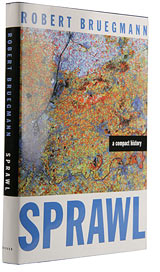(p. 3) . . . the Gateses were not the first to see that money could sometimes move mountains in public health. They are following in the footsteps of the industrial giants of the late-19th century, said Dr. Howard Markel, director of the University of Michigan’s Center for the History of Medicine.
These men also brought their fortunes to bear on social problems, and believed that they could succeed in philanthropy in much the way they had succeeded in business.
The donors of the robber-baron years started their philanthropy while still alive – a novel idea then. Andrew Carnegie, for example, gave away hundreds of millions of dollars to build libraries long before his death.
The largest bequest in American history prior to Carnegie’s time was from Johns Hopkins, a Baltimore merchant, who left $7 million to found the eponymous university and hospital in 1873 – after he died.
But the closest parallel to the Gates approach to philanthropy is that of John D. Rockefeller, said Dr. Markel and Robert E. Kohler, a medical historian from the University of Pennsylvania.
Rockefeller built Standard Oil. Like Mr. Gates, he was the richest man of his time, and like him he was reviled as a greedy monopolist.
Rockefeller, like Mr. Gates, hired a professional to run his charities. And he, like Mr. Gates, used his money systematically to identify and attack important public health problems.
Rockefeller hired Frederick T. Gates, a former minister (and no relation to the Microsoft co-founder) as his philanthropic executive. Mr. Gates read an 1892 medical textbook that convinced him that diseases had causes, like germs and worms, that could be fought by science – not a universally accepted idea at the time.
The most famous health campaign he started with Rockefeller money was the drive, begun in 1907, to rid the rural American South of hookworm. Called “the germ of laziness” because it caused anemia and made victims lethargic and dull-witted, hookworm afflicted up to a third of Southerners.
The foundation set up clinics that administered purgatives and – because the worm is shed in feces and picked up by bare feet – taught people to dig deep privies and wear shoes. More Rockefeller money underwrote some of the 20th century’s great public health drives, many using research done at Rockefeller University. Clinics were built in 50 other countries to eliminate hookworm worldwide. The effort failed because the worm can survive in soil and reinfect people; but the problem diminished, especially in parts of Asia.
In 1915, the foundation declared war on yellow fever; by 1932, scientists had realized that monkeys were also a reservoir for the virus, making eradication impossible, but by then Rockefeller scientists had invented the vaccine still used today.
Patty Stonesifer, chief executive of the Gates foundation, said she and William H. Gates Sr., the father of the software pioneer and co-chair of the foundation, consider the Rockefeller campaigns especially instructive. “We stood on their shoulders,” she said.
. . .
As Ms. Stonesifer said admiringly of the Rockefeller campaign against hookworm: “A lot of people would say, ‘you’ve got to reduce poverty to get rid of hookworm.’ But the Rockefellers said, ‘You don’t need a 20-year intervention. You can use shoes.’ “
For the full article, see:
DONALD G. McNEIL Jr. “The Rich, Sometimes, Are the Best Medicine.” The New York Times, Section 4 (Sun., December 11, 2005): 3.
(Note: ellipses added.)

 Image source: web version of WSJ article quoted and cited below.
Image source: web version of WSJ article quoted and cited below. 



